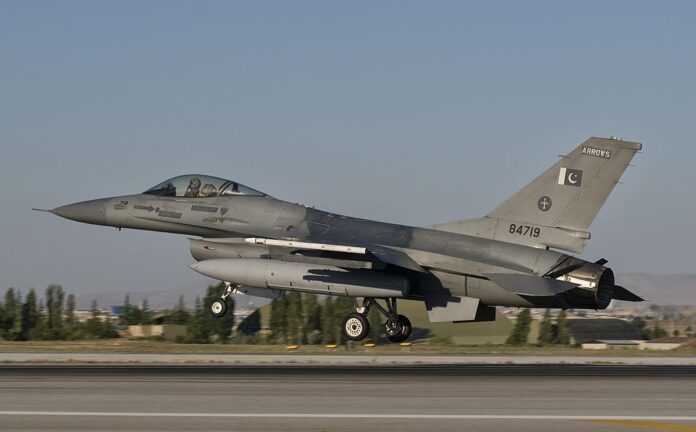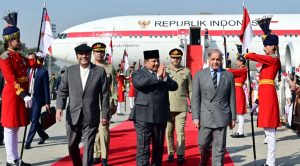Confirmed engagements during recent aerial clashes over Kashmir, wherein the Pakistan Air Force downed multiple Indian combat aircraft, including advanced Rafale and Su-30 MKI platforms, mark a significant development. These verifiable outcomes necessitate re-evaluating the regional airpower balance, directly challenging prior assumptions of Indian aerial dominance and highlighting the demonstrated combat effectiveness of Pakistan’s capabilities. It suggests not only a potential shift in the long-assumed airpower balance favouring India but also, perhaps more significantly, the combat validation of China’s advanced aerial warfare technology. On the other hand, India misfired their missile on Amritsar, Iran and Afghanistan
For years, the narrative has centred on India’s qualitative edge, bolstered by sophisticated Western and Russian hardware. Yet, the purported outcomes of these skirmishes compel us to dissect the factors at play. At the tactical level, the evidence points towards specific technological advantages potentially wielded by Pakistan, primarily sourced from China.
Pakistan’s deployment of the Chinese PL-15E BVR missile against India, marking its apparent combat debut, is telling. Expert analysis (e.g., RUSI’s Justin Bronk) indicates the PL-15 family’s advanced design, with features like an AESA seeker and dual-pulse motor, offers capabilities potentially challenging or exceeding contemporaries like the AMRAAM and R-77. While India’s Meteor missile (on Rafale) excels in mid-course endurance due to its ramjet, the PL-15’s reported faster initial speed, coupled with launch platform integration, could yield critical tactical advantages during engagements.
This brings us to the platform itself: the Chinese-made J-10C fighter. Bronk’s analysis suggests this aircraft is far from a mere export knock-off. Equipped with AESA radar, modern sensors (IRST, ESM, RWR, MAWS), datalinks, and likely paired with helmet-mounted displays, the J-10C appears capable of competing effectively against contemporary non-stealth fighters. Its potentially smaller signature compared to India’s mainstay Su-30 MKI, coupled with the advanced PL-15, presents a formidable combination.
In contrast, reports raise questions about India’s fleet. The IFRI report highlighting the Rafale’s limitations against stealthier opponents and its lack of dedicated SEAD capabilities is concerning in a high-intensity context. Furthermore, the documented low readiness rates (around 60%) of the Su-30 MKI fleet due to spare parts issues, as noted by Rajorshi Roy, compound the challenge. These factors suggest potential vulnerabilities that superior numbers alone cannot easily offset.
Beyond the individual aircraft and missile capabilities, the operational picture seems equally critical. Pakistan’s investment in Airborne Early Warning and Control (AEW&C) systems, like the Saab 2000 Erieye, appears to be paying dividends. As Sebastien Roblin points out, these platforms can detect targets at long ranges, including low-flying aircraft, and crucially, provide mid-course guidance updates to missiles like the PL-15 via datalink. This allows Pakistani fighters to potentially launch missiles without activating their own radars initially, enhancing surprise and survivability—a networked approach that may have caught Indian forces off guard. India’s relative lag in AEW&C coverage, noted by Swaim Singh, could represent a significant operational gap in managing vast, contested airspace effectively.
Strategically, the implications ripple outwards. For China, Pakistan’s purported success serves as the most potent sales pitch imaginable. Despite being a major arms seller according to SIPRI, Beijing has struggled to market its high-end fighters beyond a limited circle of clients. If Pakistan has indeed demonstrated the combat effectiveness of the J-10C/PL-15 combination against modern Indian assets, nations in the Middle East and elsewhere, as Paul Iddon suggests, might suddenly view Chinese fighters with renewed interest. This could significantly boost China’s “fighter diplomacy,” deepening strategic ties and influence through the long-term dependencies created by aircraft sales, training, and maintenance.
Regionally, these events could recalibrate strategic calculations. As Faisal and Rehman noted, Pakistan’s risk threshold may have increased post-Balakot. Successfully downing Indian aircraft without immediate, overwhelming escalation could reinforce the perception within Pakistan that military responses to perceived Indian provocations are viable. While Deependra Hooda observed that Balakot showed India could use airpower sub-conventionally, these latest clashes suggest Pakistan might feel increasingly confident in managing escalation dynamics in the aerial domain, potentially enabled by its Chinese-supplied edge.
In my assessment, while the human element—pilot skill, training, command decisions—is always paramount, the technological and operational factors highlighted in these recent reports cannot be ignored. If the accounts hold true, Pakistan may have leveraged Chinese technology to achieve a significant tactical victory, challenging India’s air dominance. More broadly, it signals China’s arrival not just as a manufacturer, but as a provider of combat-proven, high-end aerial warfare systems capable of competing on the global stage. The skies over South Asia may indeed be reflecting a new geopolitical and technological reality.














